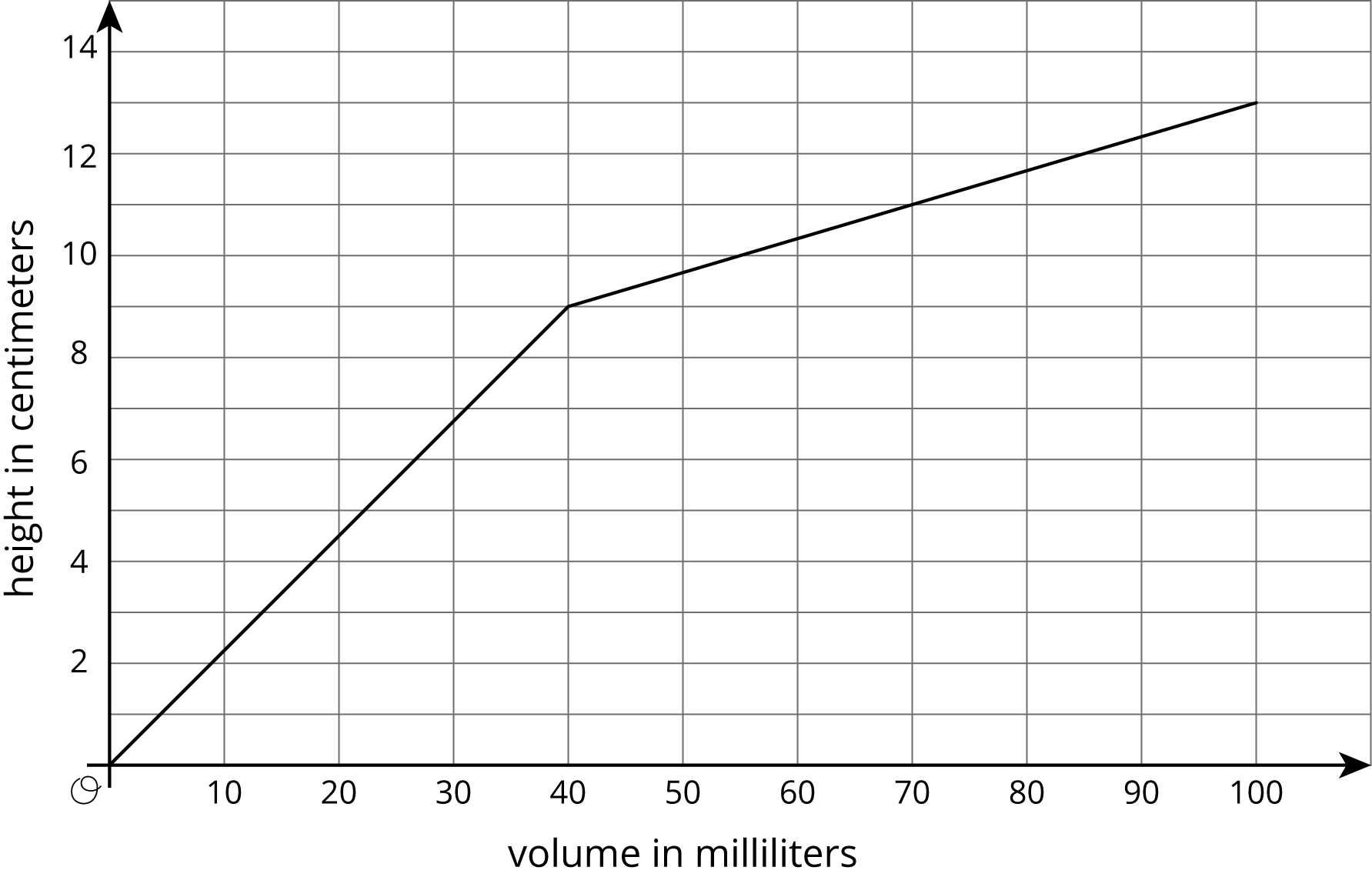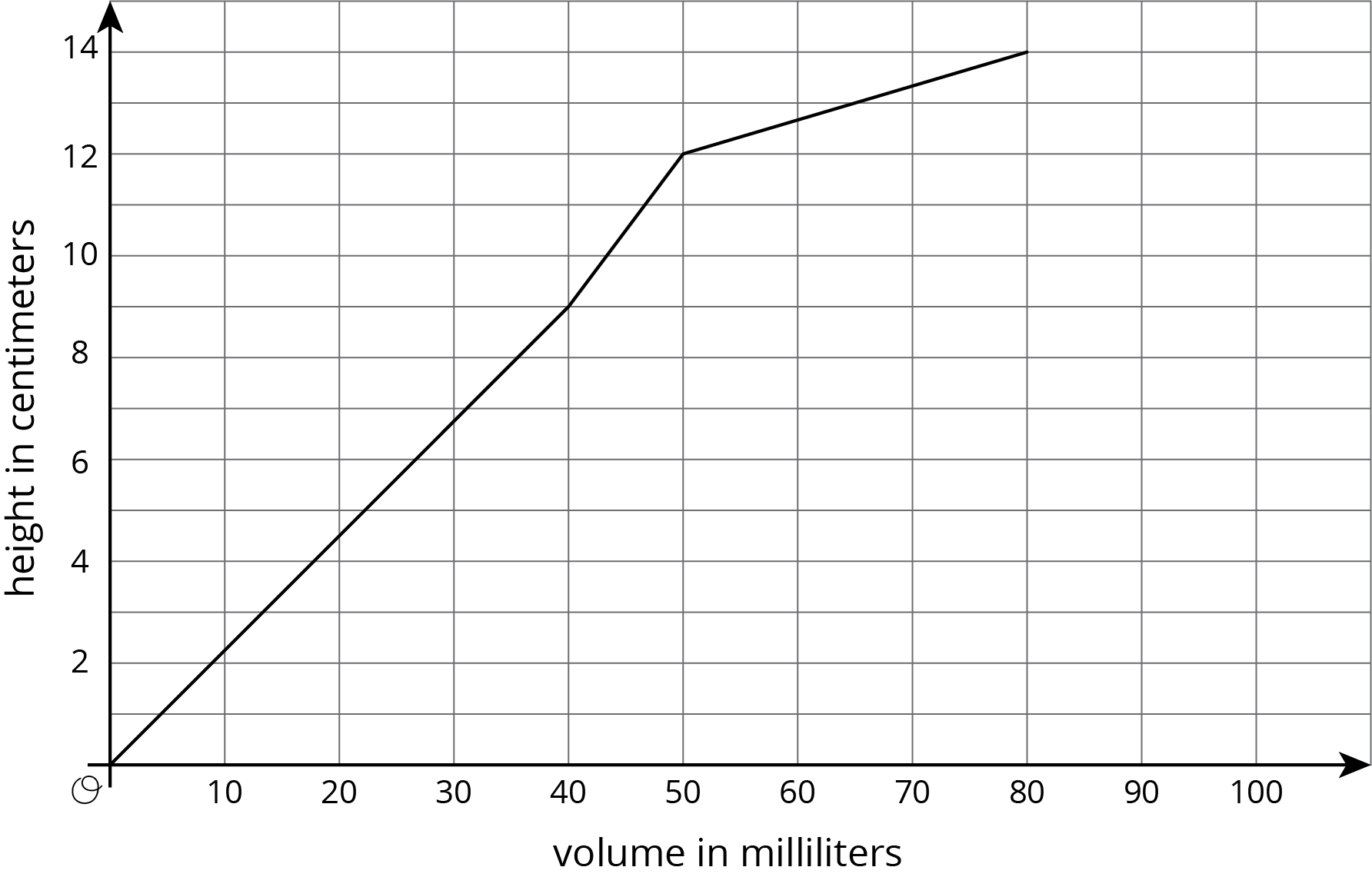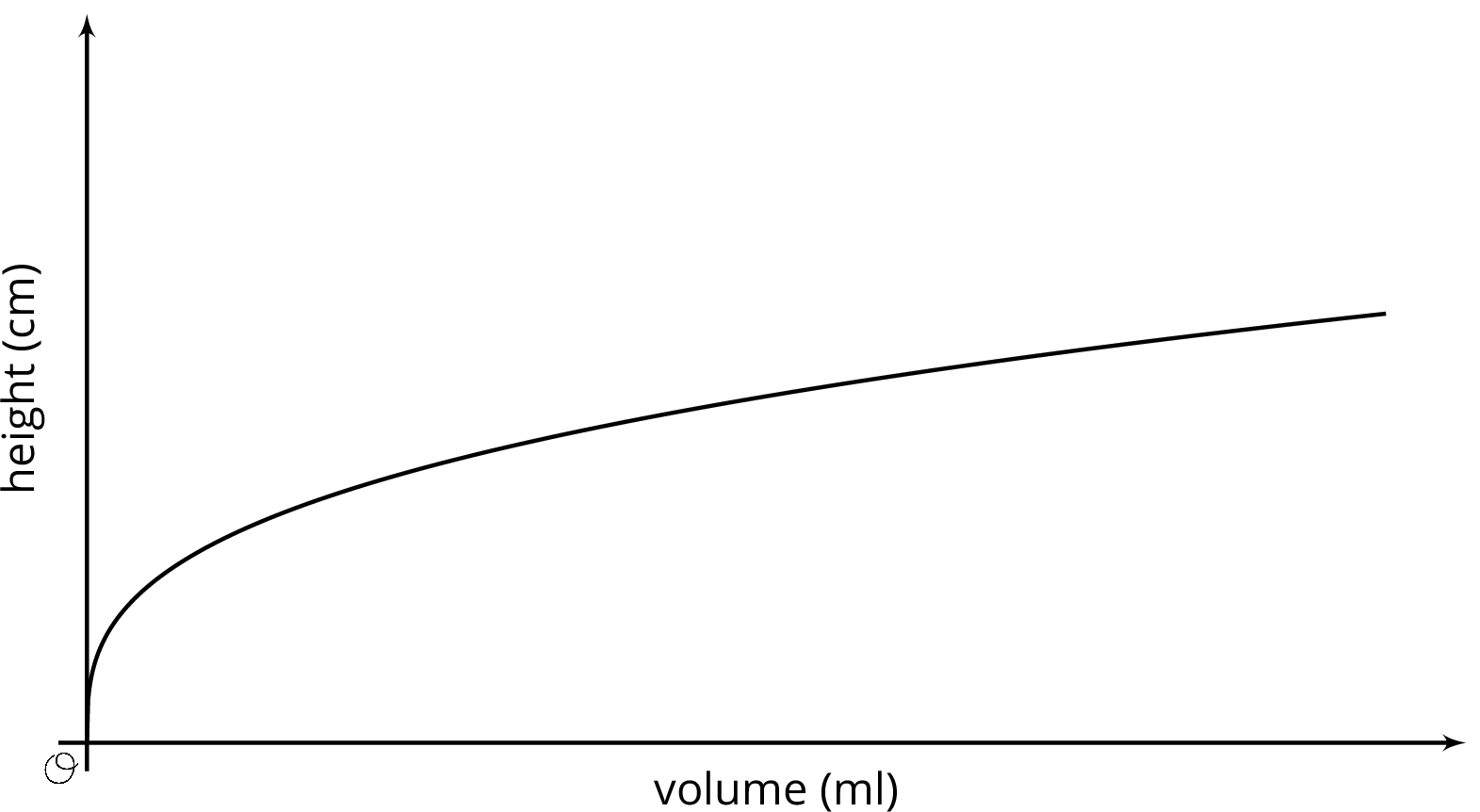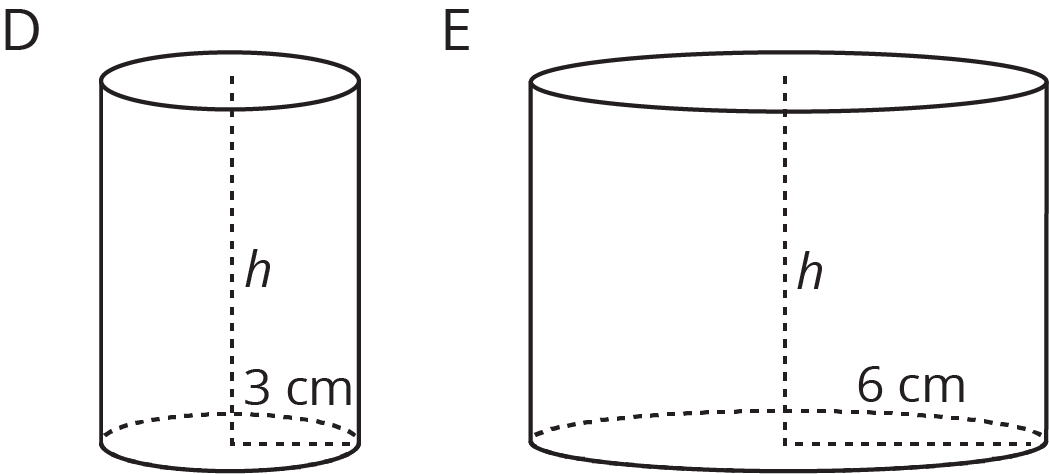11.1: Which One Doesn’t Belong: Solids
These are drawings of three-dimensional objects. Which one doesn’t belong? Explain your reasoning.

Let’s fill containers with water.
These are drawings of three-dimensional objects. Which one doesn’t belong? Explain your reasoning.

Use the applet to investigate the height of water in the cylinder as a function of the water volume.
Before you get started, make a prediction about the shape of the graph.
Check Reset and set the radius and height of the graduated cylinder to values you choose.
| trig | stats | misc |
| trig | inverse | hyperb |
| sin | sin | sinh |
| cos | cos | cosh |
| tan | tan | tanh |
| csc | csc | csch |
| sec | sec | sech |
| cot | cot | coth |


The graph shows the height vs. volume function of an unknown container. What shape could this container have? Explain how you know and draw a possible container.

When filling a shape like a cylinder with water, we can see how the dimensions of the cylinder affect things like the changing height of the water. For example, let's say we have two cylinders, D and E, with the same height, but D has a radius of 3 cm and E has a radius of 6 cm.

If we pour water into both cylinders at the same rate, the height of water in D will increase faster than the height of water in E due to its smaller radius. This means that if we made graphs of the height of water as a function of the volume of water for each cylinder, we would have two lines and the slope of the line for cylinder D would be greater than the slope of the line for cylinder E.